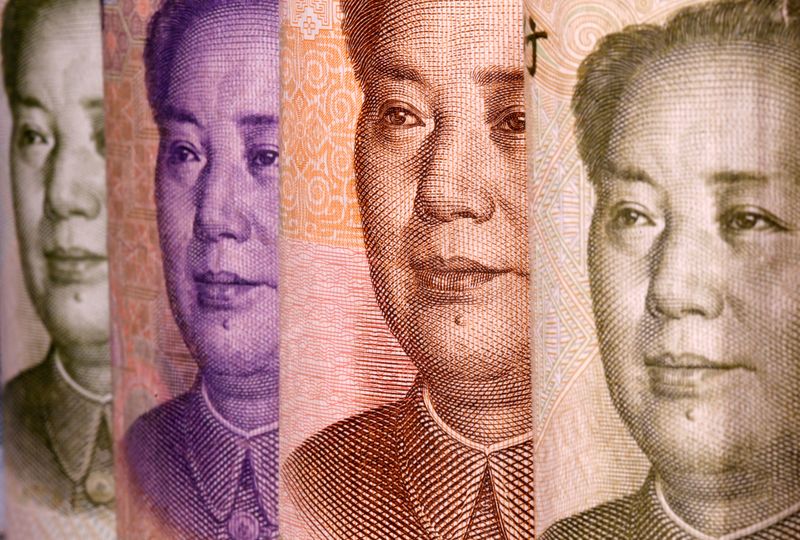
FILE PHOTO: Chinese Yuan banknotes are seen in this illustration taken February 10, 2020. REUTERS/Dado Ruvic/Illustration
April 10, 2020
By Judy Hua and Kevin Yao
BEIJING (Reuters) – New bank lending in China climbed to 2.85 trillion yuan ($405 billion) in March, with total social financing hitting a record, as the central bank pumped in more liquidity and cut funding costs to support the coronavirus-ravaged economy.
Chinese policymakers have pledged to combat the impact from the pandemic that looks to have tipped the world’s second-largest economy into its first quarterly contraction in at least 30 years.
New yuan loans in March were up sharply from February’s 905.7 billion yuan, data from the People’s Bank of China showed on Friday, and far exceeded analyst expectations.
Analysts polled by Reuters had predicted new yuan loans would rebound to 1.80 trillion yuan in March after falling by more than expected the previous month. The new loans were almost double the 1.69 trillion yuan extended a year earlier.
Total bank lending in the first three months of this year hit a record quarterly tally of 7.1 trillion yuan. The previous peak was 5.81 trillion yuan in the first quarter of 2019.
Household loans, mostly mortgages, rebounded sharply to 989.1 billion yuan in March from a net decline of 413.3 billion yuan in February, Reuters calculated from central bank data.
Corporate loans almost doubled to 2.05 trillion yuan from 1.13 trillion yuan the previous month.
Growth of outstanding total social financing (TSF), a broad measure of credit and liquidity in the economy, quickened to 11.5% in March from a year earlier and from 10.7% in February.
TSF includes off-balance sheet forms of financing that exist outside the conventional bank lending system, such as initial public offerings, loans from trust companies and bond sales.
Notably, TSF rose to a record 5.15 trillion yuan in March, from just 855 billion yuan in February. Analysts polled by Reuters had expected March TSF of 2.8 trillion yuan.
Since early February, the central bank has unveiled a raft of measures from cutting lending rates and making cheap loans at subsidised rates to providing payment relief to firms that have been hardest hit by the outbreak and virus containment measures.
Last Friday, the central bank announced a cut to banks’ reserve requirement ratio (RRR) – the amount of cash lenders must hold as reserves – for small banks, releasing around 400 billion yuan in liquidity to shore up the economy.
Policy sources have told Reuters the central bank will continue to ramp up its policy easing to support the economy but debt worries and property risks will prevent it from following the U.S. Federal Reserve’s steep rate cuts or quantitative easing moves.
The central bank will likely boost credit and lower funding costs, especially for small firms, and accommodate increased fiscal spending by the government, and the benchmark lending rate is likely to be cut on April 20, the sources said.
Broad M2 money supply in March grew 10.1% from a year earlier, higher than 8.8% forecast in the Reuters poll and 8.8% in February, central bank data also showed.
Outstanding yuan loans grew 12.7% from a year earlier compared with 12.1% growth in February. Analysts had expected 12.1% growth.
(Writing by Yawen Chen; Editing by Jacqueline Wong)

